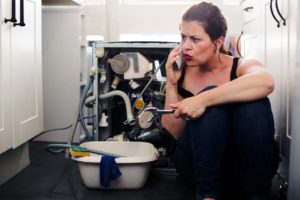 Assessing your home for flood damage can be overwhelming. Here are some of the dos and don’ts of flood repair, and some tips on when to call a professional.
Assessing your home for flood damage can be overwhelming. Here are some of the dos and don’ts of flood repair, and some tips on when to call a professional.
Floods can cause devastating damage to your home. From contaminating drywall and wallboards to destroying plaster, insulation and wood structures, flood damage is a serious issue and can take a significant amount of time to fix.
While it’s tempting to take a DIY attitude to after-flood repair, there are some things that are best left to the professionals. Here’s a list of dos and don’ts when dealing with the aftermath of a flood, along with tips on when to call for help.
What to know before you clean
Before you’re able to assess and repair the damage, make sure the area is safe for you and your family. Call a professional when dealing with unsafe electrical issues and structural damage.
The Dos of safety assessments:
- Do look for broken power and gas lines. Smell for gas, and check for foundation cracks and damage to the exterior of the building
- Do safely turn off all water and power
- Do check for major structural damage before entering the home
The Don’ts of safety assessments:
- Don’t stand under sagging ceilings or walk on sagging floors
- Don’t use your electrical appliances. If the ceilings are wet, don’t turn on lights or fans.
What to know when you start cleanup/damage repair
After you’ve assessed the flood damage, you’ll want to fix any safety hazards first. While some projects are doable by yourself, serious damage to plumbing, walls, and flooring should be dealt with by a professional.
Dos of initial cleaning:
- Do make sure your running water is drinkable, as pipes may have been damaged in the flood. To check for clogs, flush your toilet before use.
- Do identify any unstable areas in your home, such as cabinets that could fall down due to damage.
- Do remove any debris and any water trapped in the walls. You’ll also want to open all the windows and doors to help with ventilation. To dry flooded areas, you can use any combination of a wet vac, shop vac, fans, dehumidifiers and moisture drying materials (called desiccants). This is a good time to reach out to a professional cleaning crew to ensure your house is thoroughly dried.
- Do patch up holes in the walls and roof temporarily with plastic sheeting and tarps. You can also repair floors and roof sections with 4x4s at this stage.
Don’ts of initial cleaning
If your basement is flooded, don’t drain it too fast. Sudden changes in pressure could lead to your foundation collapsing.
- Don’t try to repair structural and electrical issues yourself. Call an expert. Another good tip is to avoid connecting a generator to your house’s untested power system.
- Don’t use a regular, household vacuum when trying to dry the area and remove mud.
What to know once all major issues are handled
Once you’ve finished all the serious repairs, you can focus on the secondary issues. Make sure to stay safe and hygienic during this phase of the cleanup. Wear protective clothing (such as boots, mask, and rubber gloves) and wash your hands often.
Dos of secondary repairs
- Do throw out all wall coverings (such as wooden panels) to avoid any undetected mold. You’ll also want to remove any drywall, finished ceilings and insulation that’s been damaged by the flood.
- Do thoroughly disinfect your home and throw away any exposed food or medicine, including canned goods. Make sure all hard surfaces are cleaned with hot water and soap or detergent. Finally, wipe down and dry any wooden items.
- If you have furniture that can’t be moved, do put wood blocks or aluminum foil beneath the legs of your furniture to lift it up off the floor.
Don’ts of secondary repairs
Don’t throw out all your damaged floor and wall coverings. You’ll need a piece of the damaged items to show your insurance assessor
- Don’t keep any permeable material, like foam rubber or padded furniture. This type of material should be thrown out after a flood.
Know when to ask for help
It’s definitely possible to do many repairs on your own after a flood, but some jobs are best left to a professional. It may seem cheaper to repair flood damage on your own, but supplies and machine rental costs add up quickly. For serious damage and quality cleaning/drying services, it’s best to reach out to a trusted pro, like Touch With Care.
Flood Damage Restoration: DIY or Call a Professional?


